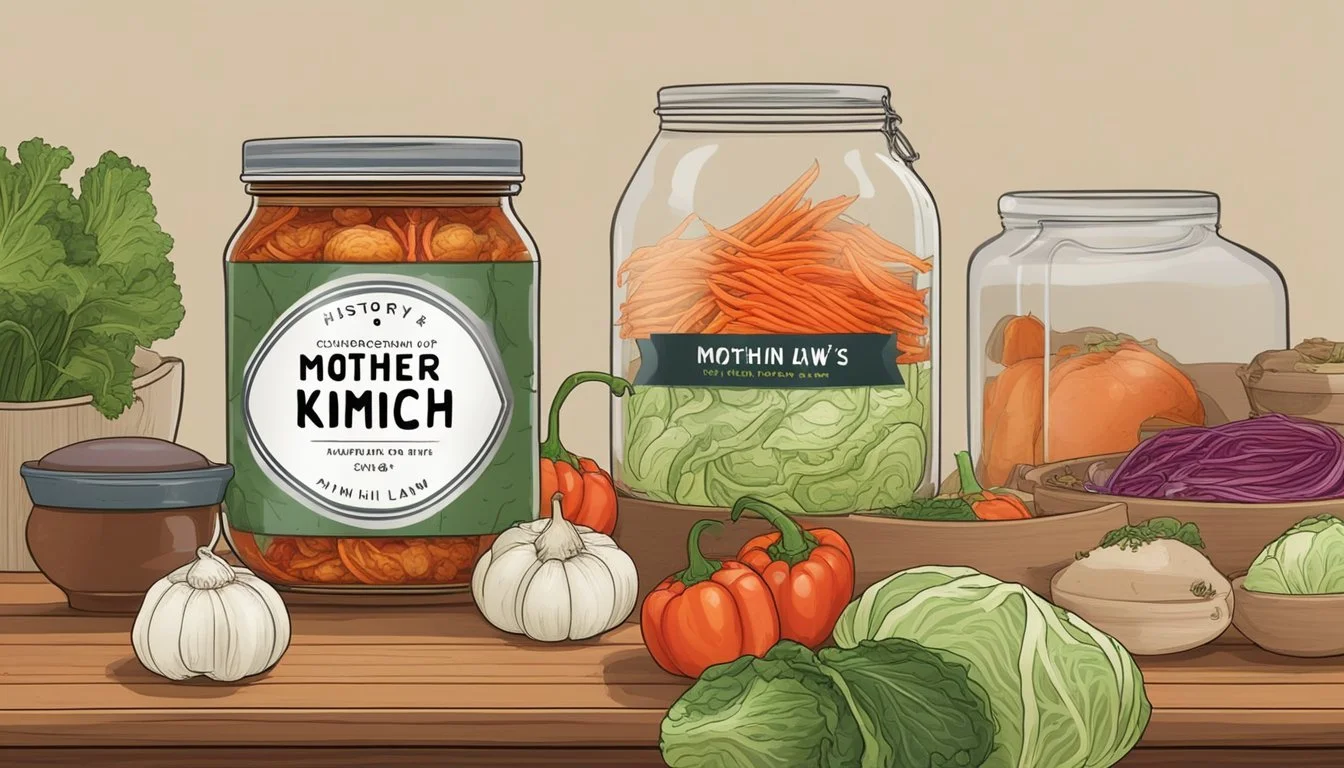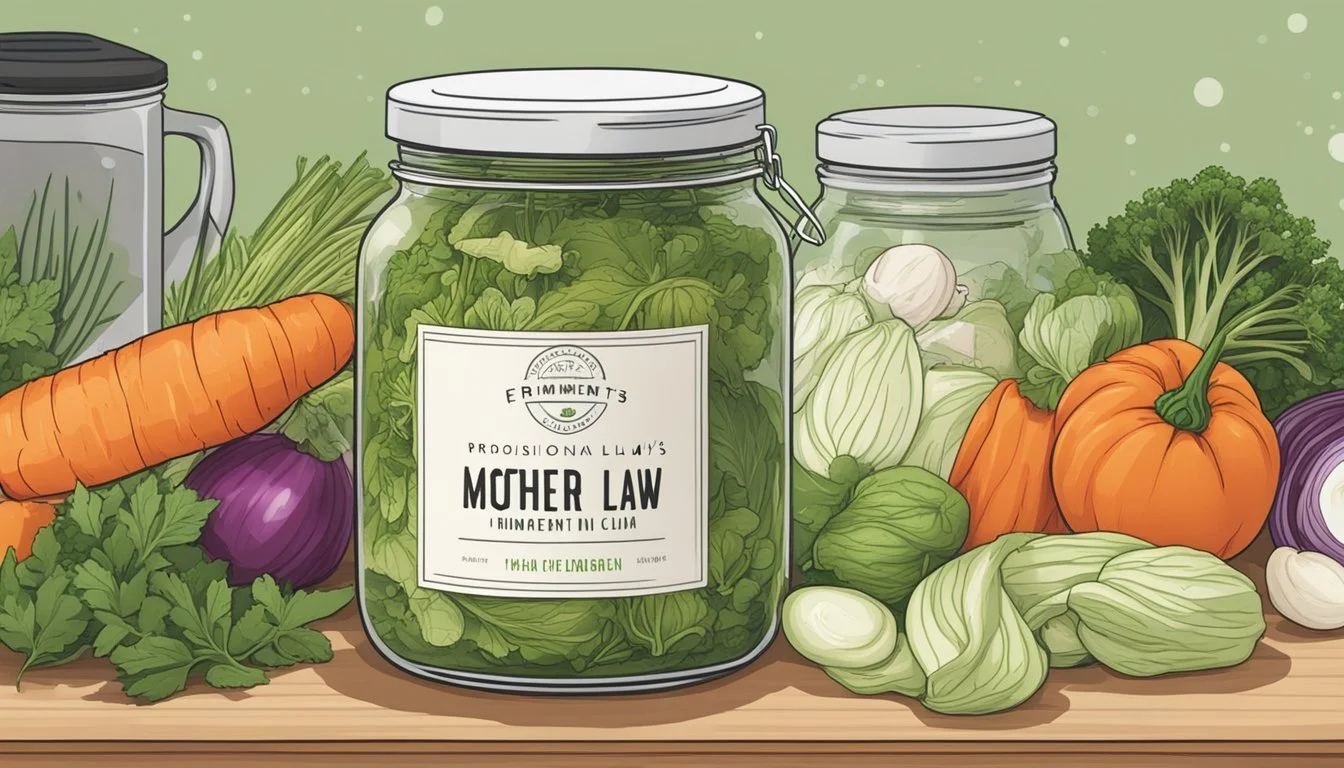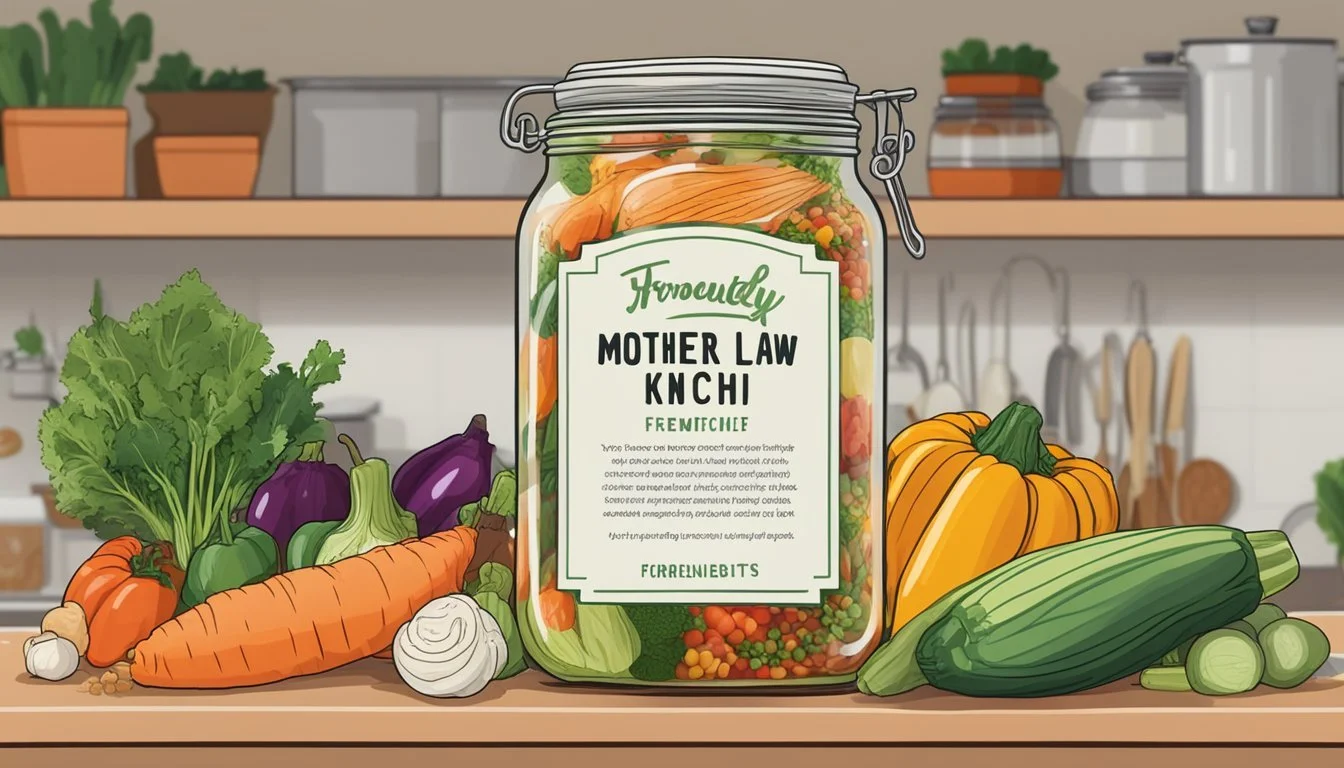How Long Does Mother in Law's Kimchi Last?
Shelf Life and Storage Tips
Mother-in-Law's kimchi (MILKimchi) offers a range of nuanced flavors as a fermented food product deeply rooted in the tradition of Korean cuisine. The lifespan of kimchi is a common question for enthusiasts and newcomers alike, as they seek to enjoy its fresh and vibrant taste. Typically, a jar of Mother-in-Law's kimchi remains at its peak quality for a certain period after production, owing to the ongoing fermentation process which continues even after packaging.
As a living food consisting of fermented vegetables like napa cabbage and radish, MILKimchi undergoes changes in taste and texture over time. When stored correctly in a refrigerator, fresh kimchi can maintain its optimal flavor for up to two weeks, while it remains safe and edible for much longer—often several months. During this extended period, kimchi's flavor becomes more pronounced; it develops a sour and pungent profile that can be appreciated in a variety of culinary applications.
History and Origin of Kimchi
Kimchi, a staple in Korean cuisine, has evolved both culturally and culinarily. This section delves into its deep roots in Korea and how Lauryn Chun brought it to the forefront through "The Kimchi Cookbook."
Cultural Significance in Korea
Kimchi is more than a side dish; it is an integral part of Korean heritage and daily life. Its origins can be traced back to the early Goryeo Dynasty (918-1392 AD), where the first iterations were quite different from today's spicy and fermented form. Early kimchi lacked the signature red chilli powder, which was introduced to Korea around 300 years ago, altering its taste and appearance significantly.
The tradition of kimjang, the communal event of kimchi-making, emphasizes its importance in Korean social and cultural fabric. It is a time when communities come together to prepare large quantities of kimchi to last through the winter months.
Influence of Lauryn Chun and the Kimchi Cookbook
Lauryn Chun, inspired by her family's own restaurant in California, brought Korean kimchi into the American palates through her business, Mother-in-Law's Kimchi (MILKimchi). Her contribution extends to authoring “The Kimchi Cookbook,” where she shares a variety of recipes and introduces the versatility of kimchi to a broader audience. Chun's influence has been pivotal in popularizing kimchi in the United States, offering a taste of Korean culture and its rich history.
What is Mother-in-Law's Kimchi
Mother-in-Law's Kimchi, often referred to as MILKimchi, is a brand that specializes in traditional Korean fermented foods, (What wine goes well with fermented foods?) with an emphasis on using high-quality, natural ingredients to create a variety of kimchi products.
Brand Overview
Mother-in-Law's Kimchi was founded with a dedication to sharing authentic, handcrafted kimchi. The brand prides itself on employing traditional hand-craft techniques passed down through generations. They stand out as an original player in the fermented foods market, affirming that their products are made using a small batch process that ensures superior quality and a depth of flavors akin to fine fermented products like wine.
Product Range
Their product range includes the original line of kimchi, which offers a fresh and vibrant taste, and the reserve line, which features a selection of specialty kimchis made with unique flavor profiles. Mother-in-Law's Kimchi ensures that every batch is:
Handcrafted using artisanal techniques.
Crafted from natural ingredients to offer an authentic Korean culinary experience.
Available in multiple varieties to suit different taste preferences and culinary uses.
Fundamentals of Kimchi Fermentation
The fermentation of kimchi is a controlled process that leverages natural ingredients to produce complex flavors and probiotics beneficial to the consumer’s health.
The Fermentation Process
Kimchi's fermentation process begins when natural ingredients are mixed with lactobacillus bacteria, which are commonly found on vegetable surfaces. This mixture then undergoes a biochemical reaction that converts sugars into lactic acid, effectively preserving the cabbage and enhancing the kimchi’s flavor profile. Mother-in-Law's kimchi, also known as MILKimchi, utilizes this traditional technique, ensuring that a balance of fresh, tangy flavors and natural probiotics is achieved.
Key Ingredients: Napa cabbage, garlic, ginger, chili peppers, and often additional vegetables.
Culmination: The culmination of flavors arises from the lactic acid fermentation within a cool environment, providing MILKimchi with its characteristic depth and tang.
Fermentation Time
The duration of kimchi fermentation is subject to the desired taste that the consumer is aiming for. Mother-in-Law's kimchi strikes an equilibrium by initially fermenting the product for one week before it is dispatched to the market. Post-distribution, the kimchi can continue to ferment, especially when stored at cool temperatures like inside a refrigerator.
Initial Fermentation: Concluded after one week to establish initial flavors.
Post-Distribution Fermentation: Continues in the refrigerator; can be eaten fresh or allowed to develop in taste over several weeks to months.
Mother-in-Law's Kimchi Recipe Components
Mother-in-Law's Kimchi, also known as MILKimchi, involves a well-honed balance of ingredients and flavors that create its distinct taste profile. This section will explore the key components and the unique flavor signature of this recipe.
Key Ingredients
The foundation of the MILKimchi recipe starts with napa cabbage, which lends its crisp texture to the final product. Key players in the sauce include:
Garlic: Essential for the bold taste.
Daikon radish: Adds crunch and a peppery sharpness.
Chile flakes: These are crucial for the spicy heat that kimchi is known for.
Fresh green onions and chives complement the mix.
For those following a vegan lifestyle, it is important to ensure that the kimchi recipe excludes any products like fish sauce or shrimp paste, which are traditionally used in some variations.
Kimchi Flavor Profile
The flavor profile of Mother-in-Law's Kimchi can be described as a harmonious blend of:
Spiciness: Coming from the chile flakes.
Umami: The savory taste that deepens the longer it ferments.
An earthy robustness that ties the tanginess and fermentation together.
Careful combination of these elements yields a kimchi that is complex and rich, offering the tongue a spicy, savory, and slightly tangy experience.
Shelf Life of Mother-in-Law's Kimchi
Mother-in-Law's Kimchi, known for its rich blend of flavors, maintains its quality when stored accurately. Notably, its shelf life in a refrigerator is subject to how it is handled and stored post-fermentation.
Optimal Storage Conditions
To maximize the shelf life of Mother-in-Law's Kimchi, one should keep it in a temperature-controlled refrigerator typically between 32°F and 39° F (0° C to 3.9° C). It is imperative to store kimchi in an airtight container to prevent contamination and maintain quality. If the jar lid is sealed correctly, it minimizes the risk of overflow and unwanted bacterial growth.
Signs of Spoilage
Mother-in-Law's Kimchi is safe to eat for several months as long as it displays no signs of spoilage. These signs include an off-odor, discoloration, or visible mold. One may also notice a sour taste, which beyond a certain point indicates spoilage. If any of these signs are present, the kimchi should not be consumed.
Health Benefits of Mother-in-Law's Kimchi
Mother-in-Law's Kimchi offers several health benefits associated with its fermentation process and nutrient content. This section explores the specific advantages related to probiotics and gut health and its vitamins and nutritional value.
Probiotics and Gut Health
Mother-in-Law's Kimchi is a fermented food rich in probiotic bacteria, which are beneficial for maintaining a healthy digestive system. These probiotics contribute to balancing the gut microbiota, enhancing overall gut health. Regular consumption of kimchi can aid in digestion and may support the immune system.
Vitamins and Nutritional Value
In addition to its probiotic content, Mother-in-Law's Kimchi is also a valuable source of vitamins. It is particularly high in vitamin C, an antioxidant that may protect the skin from oxidative damage and support the immune system. Furthermore, being made largely from Chinese cabbage, the kimchi is nutrient-dense while remaining low in calories, offering a myriad of nutrients with minimal caloric impact.
Serving and Using Mother-in-Law's Kimchi
Mother-in-Law's Kimchi, known for its less liquid content and depth of flavor due to precise fermentation, can be a versatile and flavorful ingredient in both traditional and contemporary cuisines.
Traditional and Modern Pairings
Kimchi is traditionally enjoyed as a side dish, or banchan, in Korean cuisine. Its tangy zing and complex flavors make it an excellent companion to a variety of main courses. It pairs particularly well with steamed rice and protein-rich dishes like grilled tofu (What wine goes well with grilled tofu?) or meats. The fermented condiment is versatile enough to complement Western-style meals too. Cheese lovers may appreciate the contrast between the spicy kick of kimchi and the creamy textures of cheeses, creating a stimulating taste experience.
Wine and beer enthusiasts find that the robust flavors of kimchi can stand up to a range of beverages. A crisp white wine or a light lager can balance the kimchi’s spiciness, making for a delightful pairing.
Incorporating Into Recipes
Mother-in-Law's Kimchi excels as a flavorful ingredient beyond its role as a side dish. Its bold taste can enhance many recipes:
Kimchi Fried Rice: Incorporate kimchi into fried rice for an extra layer of flavor.
Stews and Pancakes: Dishes like kimchi stew (kimchi jjigae) and kimchi pancakes (kimchijeon) rely on kimchi for their signature taste.
Burgers and Sandwiches: Add a unique twist by topping these with a generous helping of kimchi.
Tofu Scrambles: For a vegan-friendly option, adding kimchi to tofu scrambles can imbue the dish with a rich, savory accent.
Culinary Tip: Care should be taken to add kimchi towards the end of the cooking process to maintain its characteristic texture and to prevent the loss of probiotics from excessive heat.
Buying and Tasting Mother-in-Law's Kimchi
Mother-in-Law's Kimchi, often stylized as MILKimchi, boasts a range of flavors and a fresh taste that evolves with time. It captures the essence of traditional Fall harvest kimchi with a vibrant umami flavor.
Where to Purchase
Mother-in-Law's Kimchi can be acquired from various outlets, which may include:
Local Grocery Stores: It's common to find MILKimchi in the refrigerated section.
Specialty Shops: Stores focusing on gourmet or international foods may stock it.
Online Retailers: Consumers may purchase through e-commerce platforms, including MILKimchi’s official website.
Tasting Notes and Varieties
MILKimchi embraces a spectrum of tastes:
Fresh: MILKimchi is known for its vibrant and tangy flavors when consumed within the initial weeks after production.
Matured Flavor Profile: As the kimchi ages, it develops a more pronounced and deeper umami taste.
Common varieties of MILKimchi include:
Everyday Kimchi: This is a nod to traditional Mak Kimchi with smaller cuts of napa cabbage, ideal for a faster fermentation process and a full-bodied taste.
Reserve Line: Offers a depth of flavor, likely more intense, catering to those who appreciate a bold taste experience.
The product gracefully transitions from fresh, zesty notes to a mature umami richness, promising a complex palette regardless of its age.









